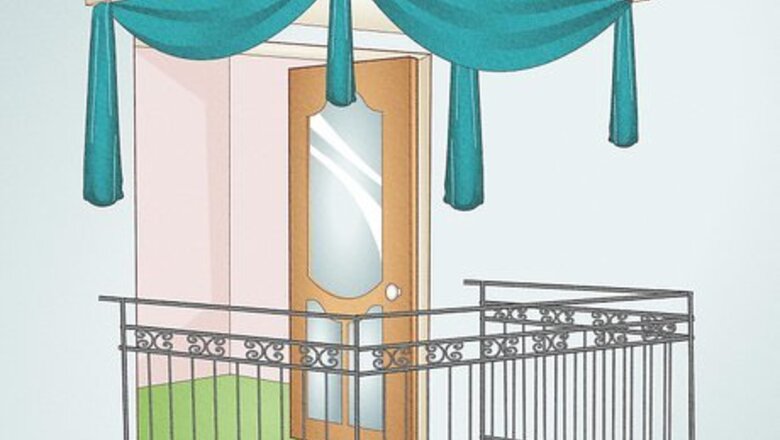
views
Using Curtains and Blinds
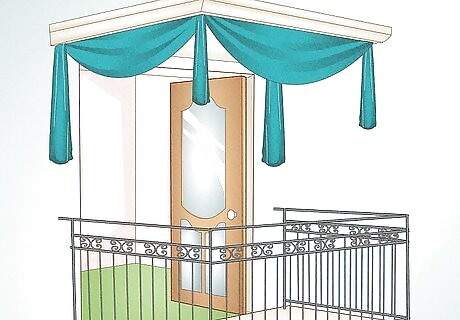
Use outdoor curtains and drapes to enclose your balcony in style. Outdoor curtains and drapes are a great way of adding an elegant touch to your balcony. Depending on the kind of curtains you buy, they may be hung with a rod or attached at the corners of the balcony with brackets or hooks. Outdoor curtains and drapes can be bought at most home centers, hardware stores, and also at many general retailers. Add a dash of color to your drapes by gathering them together with a length of ribbon. You can even swap out ribbon colors for a more festive balcony during holidays.
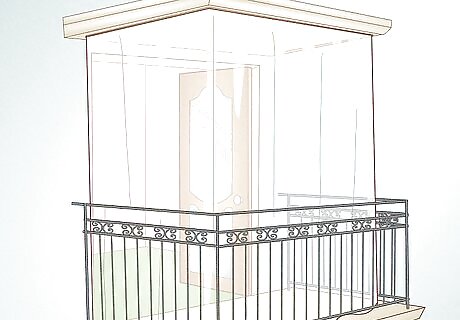
Hang mosquito curtains to keep away the bugs. Mosquito curtains come in a variety of colors and cuts. You can hang these curtains on curtain rods, but the fabric is light and can also be tacked into place around the perimeter of your balcony. Mosquito curtains are usually made of durable, machine washable fabric. If you want an enclosure that’s inexpensive and resilient, these are a great option. Because mosquito curtains are usually lightweight, light colors may be semi-transparent. If privacy is your goal, choose a dark color for your mosquito curtains. If you like the look of outdoor drapes but hate being pestered by bugs, layer mosquito curtains inside the outdoor drapes.
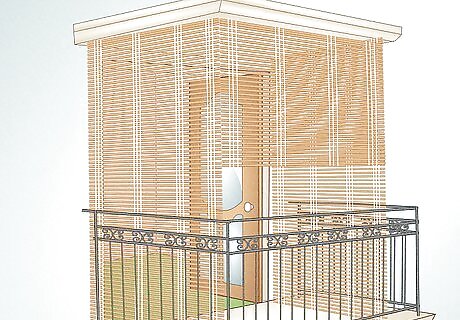
Install bamboo roll up blinds. Bamboo roll up blinds offer excellent privacy and some additional protection from the elements. Because they’re relatively solid, they block the wind. Most bamboo roll up blinds hang from simple screw-in brackets. If you live in an especially windy area, you may want to install adhesive Velcro strips at the sides and bottom of the curtain to hold it more firmly in place. When bad weather is on its way, roll up your bamboo blinds. Even well-installed blinds may break in high winds, driving rain, and hail.
Adding a Screen or Netting
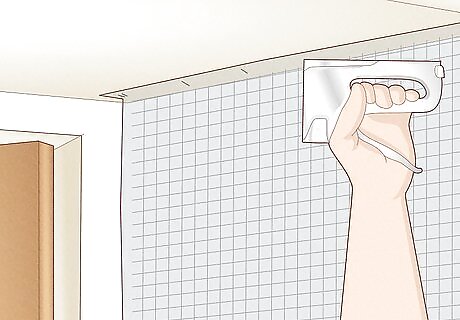
Staple screen material along the top and bottom edges of the balcony. Have a helper or two stretch the material tight along each side of the balcony, then staple it in place at the top and bottom in roughly 6-in (15.2-cm) intervals. Screen material can be bought at most hardware stores and home centers. Tight weave screens work best at keeping out insects. Staples can leave unsightly holes behind when the screen is removed. If you have expensive woodwork, you might not want to use this technique.

Hold screen material in place with magnets. Buy thin metal strips to run along the top and bottom balcony edges. Once the strips are in place, use strong magnets to sandwich the screen material against the strip. Space the magnets evenly on the strips, and remove the magnets to take down the material. Although there are many ways you might attach the metal strips, strong glue or mounting brackets work well, are easy to install, and are relatively inexpensive. For your magnets to stick to the strips, the metal will need to be made of iron, nickel, or some other kind of magnetic metal. When in doubt, check metal with a magnet.
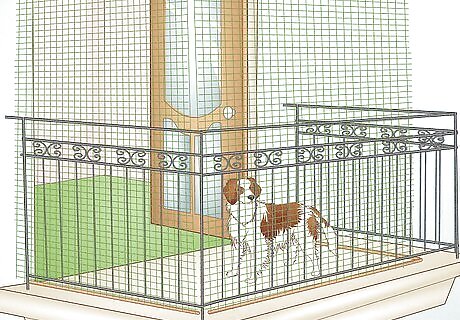
Put up netting to make your balcony pet safe. Buy six dowels, two for each side of your balcony. Cut three segments of netting long enough to hang to the floor and wide enough to extend to both ends of each side of the balcony. Thread same-sized dowels through the top and bottom of each net segment. Screw in eye hooks at the top and bottom of your balcony, then insert the dowels in the hooks. Small to moderate sized balconies will likely only need hooks at the four corners of the balcony. Larger balconies should space eye hooks about every foot (30.5 cm) or so. Zip-ties can be used to support the netting and keep it from bunching up. Simply add the ties at regular intervals along the top of the dowel and the attached netting. If your netting isn’t long enough, you can zip-tie segments together to make larger pieces.
Creating a Permanent Enclosure
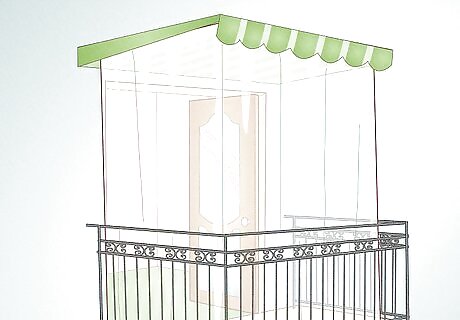
Add a screen porch awning to make a shady enclosure. Porch awnings can be bought at home centers, hardware stores, and big box stores. Generally, supports for the awning and the awning itself are attached to your home. Screens are usually attached around the perimeter of the awning with zippers or Velcro. Screen porch awnings are a great idea if your balcony gets a lot of sunlight. If you want to be able to control your balcony’s shading, choose a retractable awning. Most screen porch awnings come with mounting brackets and fasteners that you can easily install yourself to hang the awning. Inexpensive awnings usually cost a few hundred dollars, but nicer models can cost as much as $3000. On average, expect to pay around $1500.
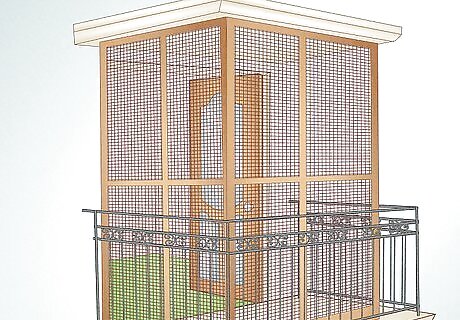
Install premade screen panels. Measure the height and width of the open spaces around your balcony. Next, search online for “premade screen panels.” This should bring up a list of companies to choose from. Compare the prices of a few sellers, then when you decide on one, submit your measurements and order the panels. Some panels are screwed into place, others are fastened with caulk. Always follow the manufacturer’s recommended installation procedure for the best results. A normal porch outfitted with premade screen panels will cost about $500 if you install them yourself.

Enclose your balcony with shutters. Shutters can add a quaint, unique quality to your balcony. However, this technique works best with balconies that have floor-to-ceiling wooden pillars or supports. Screw the shutters into the pillars, and use an eye hook at the middle to make a simple latch. Shutters are one of the best ways to block the wind on your balcony. If your balcony tends to be windy, shutters might be the perfect choice. Buy shutters at hardware stores and home centers, or try your hand at making your own. Depending on the material and quality of the shutters, prices can vary greatly. Typical shutters usually end up costing about $20 per foot.




















Comments
0 comment